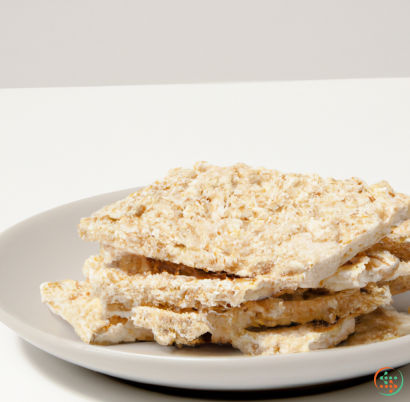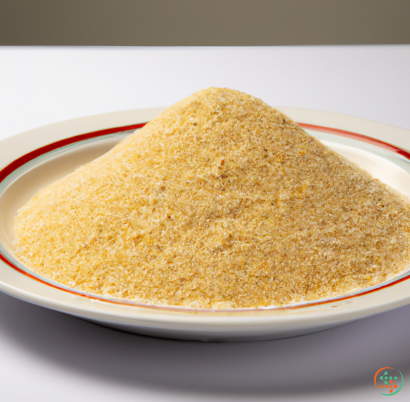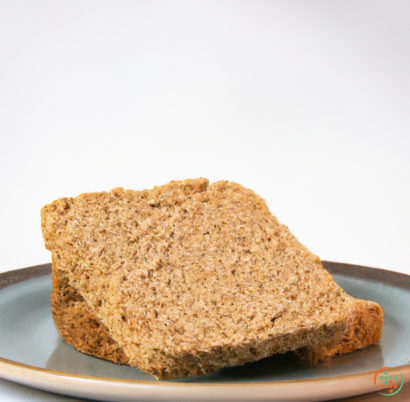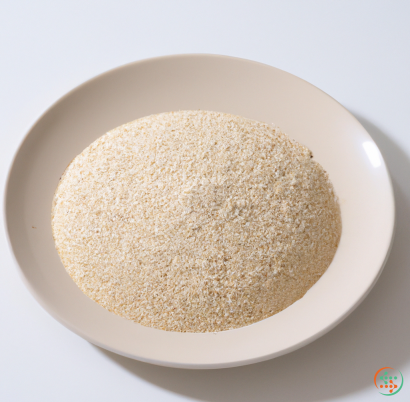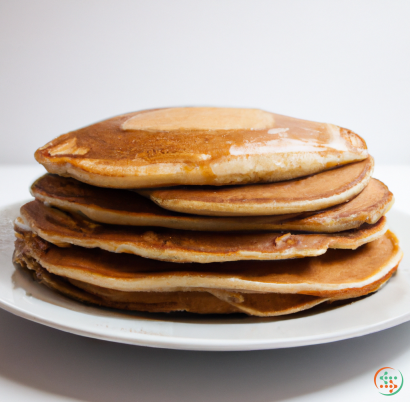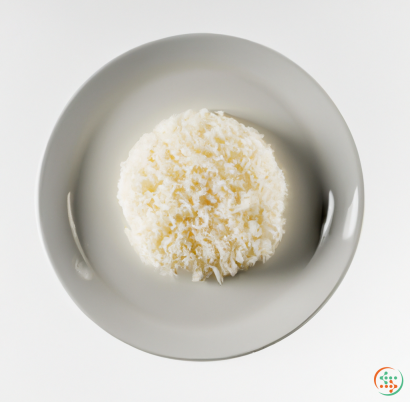Teff
Few people have heard of Teff, but it's quickly becoming one of the most popular and versatile health food ingredients out there. Teff is a tiny grain that originated in Ethiopia and is similar to quinoa in its nutritional value, taste, and texture. It's gluten-free, vegan, and loaded with plant-based protein and fiber, so it's easy to see why it's becoming such a popular health food ingredient.
What Is Teff?
Teff is a grain that originated in Ethiopia thousands of years ago. It's a tiny grain, measuring only 1-2 mm in diameter, but it packs a huge nutritional punch. It contains high amounts of fiber and protein, as well as essential vitamins and minerals like phosphorus, zinc, iron, and magnesium. It's also higher in calcium than most other grains, making it especially beneficial for vegans or those with dairy-restricted diets.
Aside from its health benefits, teff is also incredibly versatile. It can be used to make flour for baking, as a hot cereal, or popped like popcorn. It's also possible to cook teff into a porridge or polenta-like side dish. There are plenty of ways to enjoy Teff.
What Does Teff Taste Like?
Teff is a bit milder in flavor than some other grains, like quinoa, barley, or millet. Its flavor is a bit more delicate, with sweet and nutty notes. When cooked, it has a creamy, porridge-like texture that pairs perfectly with savory toppings like shredded cheese or sautéed vegetables.
Nutritional Benefits Of Teff
There are plenty of nutrition benefits to be had from incorporating teff into your diet. One study found that teff had the highest mineral content of any grain, beating out even quinoa. This makes it an excellent source of essential minerals like iron, phosphorus, zinc, and magnesium.
It is also high in protein and fiber, which makes it a great choice for vegans and those with restricted diets. Teff is also rich in calcium, potassium, and vitamin C, making it a great way to get all these important nutrients without needing to resort to dairy products or fortified foods.
How To Use Teff
Teff is incredibly versatile and can be used to make a wide variety of dishes. It can be boiled like a hot cereal, made into a porridge-like side dish, or popped like popcorn and eaten with savory toppings. It can also be ground into a flour and used in baking.
For a quick breakfast, try boiling some soaked teff in water or milk and adding your favorite blend of spices and sweetener. It creates a creamy, comforting porridge that can be enjoyed as-is or topped with nuts, dried fruit, and/or nut butter.
To use Teff as a flour substitute, try replacing some of the traditional flour in a recipe with teff flour. It works especially well in quick breads and pancakes, giving them a more nutty flavor.
Conclusion
Teff is an incredibly versatile grain that originates from Ethiopia. It's a nutrient-dense health food, loaded with fiber, protein, and essential vitamins and minerals. Despite its size, it has a strong a delicious flavor that pairs wonderfully with both sweet and savory ingredients. It's also gluten-free, vegan, and easy to incorporate into your diet in a variety of ways. So why not give Teff a try in your next meal?
The Journey of Teff From Farm to Plate
The journey of teff to a dinner plate is a complex one, involving many steps along the way. Teff is an ancient grain, originating in Ethiopia and Eritrea, but it is now grown in many countries around the world with the biggest producers being India, the United States and Canada. In this blog post, we will explore the fascinating journey of teff from farm to plate, detailing the processes involved and the science behind it.
What Is Teff?
Teff (Eragrostis tef) is the world’s smallest whole grain and is a species of the grass family, Poaceae. It is considered a millet and is a staple food in Ethiopia and Eritrea, where it is Ground into flour to make dishes such as injera. Teff’s popularity is rapidly rising in many other countries around the world, as people discover its nutritional benefits, as well as its light, nutty taste. Teff has a larger concentration of calcium, boron, copper, zinc, phosphorus and iron than other grains. It is also a source of dietary fibre and quick-digesting carbohydrates that can provide a slow-release of energy.
How Is Teff Grown?
Teff is an annual crop, meaning it is planted each year from seed, typically in the spring. The crop can be grown in a variety of geographic regions and prefers a warm, dry climate. It is often planted in loose, well-drained soil, at a depth of between 1 - 2 inches, or 2.54 - 5.1 cm. It is compatible with both traditional and organic farming methods, as it is a hardy crop and difficult to damage with pesticides. Before planting, the soil should be well tilled and tested for fertility, as well as proper pH levels, as teff prefers slightly acidic soil. Teff should be sown at a rate of 1/2 - 1lb per 1000 square feet (45.45 - 90.90 g/m2).
Once it has been sown, teff requires minimal maintenance. The rows should be kept free of weeds and the crop should be sprayed with water weekly to keep it healthy and prevent disease. Teff is usually harvested after 93 - 105 days when the seeds have turned a golden-brown colour and are ready to be harvested. Depending on the size of the crop, the harvesting is traditionally done by hand, with a single sickle, but mechanised harvesters can be used for large-scale production.
Processing and Milling Teff
Once the teff has been harvested, it must be processed and milled before it can be made into food for human consumption. After harvest, the stalks and stems of the plant are removed, leaving the seed heads. These are then threshed and the grains are separated from the chaff, or inedible parts of the grain. The threshing process can be done using a variety of methods, including tumbling by hand, by a mechanical thresher, or with a hand-held sickle.
The next step in the process is winnowing, which is a traditional method of separating the heavier grains from the lighter chaff. This is done by gently blowing on the grains, so that the lighter chaff blow away, leaving the heavier grains behind. The grains are then cleaned by sieving and then dried, either naturally in the sun or with a mechanised dryer, to ensure they are free from moisture.
The dried grains are then milled, usually with a stone grinder or roller mill, to produce flour. The flour is sifted and then packaged. This flour can then be used to make a variety of dishes, including the popular Ethiopian flatbread, injera.
Transporting the Teff
The final stage of the journey of teff is transporting it from the farm to the dinner plate. This is done in a variety of ways, from air freight, to rail or road transport. Small-scale farmers may choose to transport the teff by hand, on a mule or donkey, for example. Larger operations may use motor vehicles, such as lorries, to transport the teff to nearby warehouses or distributors, such as supermarkets or shops.
The teff is usually transported in sealed containers to help protect it from pests and moisture. Depending on how far the teff needs to be transported, it may need to be kept refrigerated to extend its shelf life. Teff is usually transported in net sacks and will contain instructions on how it should be stored.
Conclusion
The journey of teff from farm to plate is a complex one and involves many steps along the way. From planting to harvesting, processing and milling, right through to transit and finally, presentation on the dinner plate - the science behind each step is fascinating and intricate. With some care and consideration, everyone can enjoy the nutty, earthy flavour and health benefits of teff.
| Vitamin B1 | 0.18 mg | |
| Vitamin B2 | 0.03 mg | |
| Vitamin B3 | 0.91 mg | |
| Vitamin B6 | 0.1 mg | |
| Vitamin B9 | 0.018 mg |
| Calcium | 0.049 grams |
Daily Value 1.3 g
|
| Iron | 0.00205 grams |
Daily Value 0.018 g
|
| Magnesium | 0.05 grams |
Daily Value 0.4 g
|
| Phosphorus | 0.12 grams |
Daily Value 1.25 g
|
| Potassium | 0.107 grams |
Daily Value 4.7 g
|
| Sodium | 0.008 grams |
Daily Value 2.3 g
|
| Zinc | 0.00111 grams |
Daily Value 0.011 g
|
| Copper | 0.23 mg |
Daily Value 0.9 mg
|
| Manganese | 0.00286 grams |
Daily Value 0.0023 g
|
| Tryptophan | 0.041 grams | |
| Threonine | 0.149 grams | |
| Isoleucine | 0.146 grams | |
| Leucine | 0.311 grams | |
| Lysine | 0.109 grams | |
| Methionine | 0.125 grams | |
| Cystine | 0.069 grams | |
| Phenylalanine | 0.203 grams | |
| Tyrosine | 0.133 grams | |
| Valine | 0.2 grams | |
| Arginine | 0.151 grams | |
| Histidine | 0.088 grams | |
| Alanine | 0.218 grams | |
| Aspartic Acid | 0.239 grams | |
| Glutamic Acid | 0.975 grams | |
| Glycine | 0.139 grams | |
| Proline | 0.193 grams | |
| Serine | 0.181 grams |
| Total Sugars | 0.131141 grams |
per 100g
|

